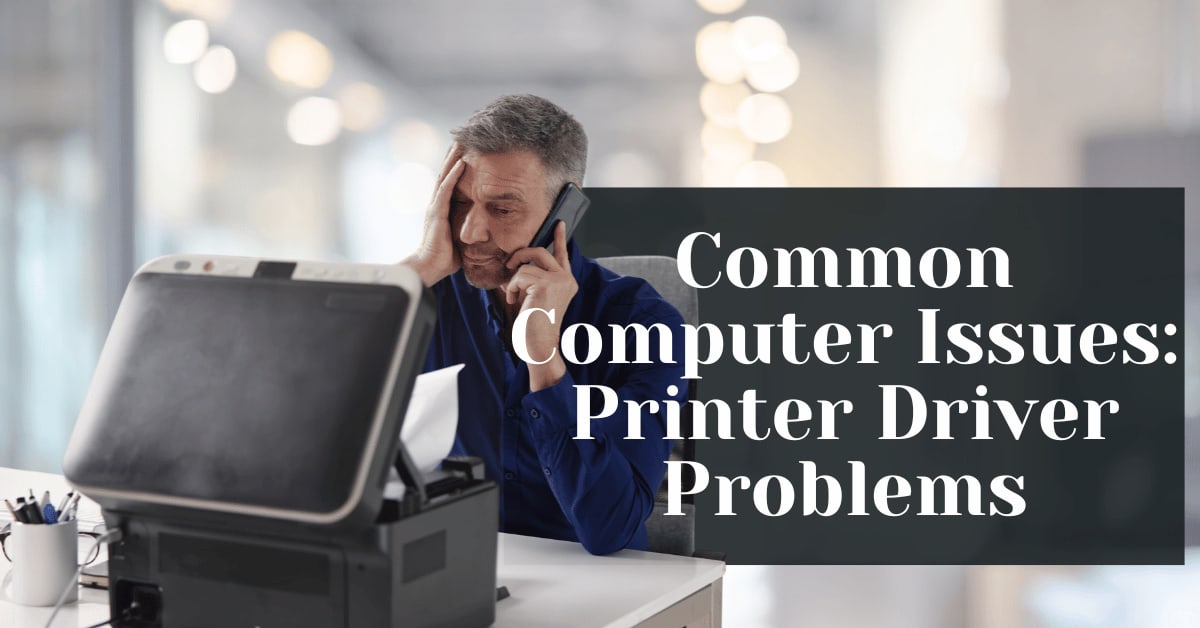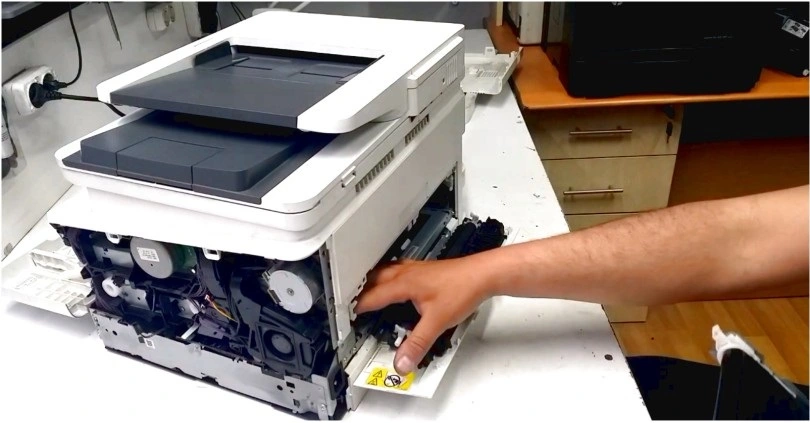Introduction
Most Common Printer Problems Solved: Printers are indispensable tools in both home and office environments, yet they often encounter problems that leave us frustrated and stuck. Whether it’s a paper jam, a connection issue, or poor print quality, printer issues can be a major hassle when you’re in the middle of a project.

In this blog, we’ll cover the most common printer problems solved with practical solutions that will help you get back on track quickly. If you’ve encountered any of these frustrating issues, this guide is designed to help you troubleshoot and resolve them efficiently. Let’s jump right in!
1. Paper Jams: A Persistent Printer Problem
Paper jams are among the most common printer problems and can occur for various reasons. They usually happen when the paper gets stuck inside the printer, preventing it from completing the print job.
How to Solve Paper Jams:
- Turn Off the Printer: Always turn off the printer before handling any internal components.
- Open the Paper Tray and Rear Cover: Locate the paper tray and any rear access doors to the printer. Open them to gain access to the jammed paper.
- Gently Remove the Paper: Carefully pull out any stuck paper. Avoid tearing the paper inside the printer.
- Check for Small Scraps of Paper: Look for any tiny paper bits that could be stuck in the rollers, which may lead to future jams.
- Use Correct Paper: Always use the recommended type of paper. Avoid using paper that’s too thick or too thin for your printer.

Preventing Paper Jams:
- Regularly clean the rollers and feed mechanism.
- Ensure the paper is properly aligned in the tray.
2. Printer Not Responding: “Ready” but Nothing Happens
It’s a common frustration—your printer shows as “ready” to print, but the job doesn’t start. This issue can be caused by several factors, including a stuck print queue or communication issues.
How to Solve Printer Not Responding:
- Clear the Print Queue: Open the print queue from your computer and cancel any stuck jobs. If jobs are stuck, restart your computer and printer, then try printing again.
- Check Printer Status: Ensure that your printer is set to “Online” mode and is not in “Offline” or “Sleep” mode.
- Reboot Both Devices: Power off both the printer and your computer, then power them back on to refresh the connection.
- Check Printer Drivers: Outdated or corrupted drivers can prevent printing. Visit the manufacturer’s website to download and install the latest drivers for your printer.

3. Poor Print Quality: Faded or Blurry Prints
A printer producing poor print quality can significantly hinder your productivity, whether it’s faded text or blurry images. Common causes include low ink levels, clogged printheads, or incorrect settings.
How to Solve Poor Print Quality:
- Check Ink or Toner Levels: Verify that your printer’s ink or toner cartridges are not empty. If they are, replace them with new cartridges.
- Clean the Printhead: Many printers have a built-in utility to clean the printheads. Run this feature from the printer’s settings.
- Adjust Print Settings: Make sure that your printer’s settings are not set to “draft mode” or low quality. Choose higher print quality for important documents.
- Test Print Quality: Print a test page from the printer’s control panel to evaluate the print quality and determine if further adjustments are needed.
Preventing Poor Print Quality:
- Clean the printhead regularly.
- Always use high-quality paper to avoid ink smudging.
- Replace ink or toner cartridges before they run out completely.
4. Printer Connectivity Issues: Printer Won’t Connect to Computer
Printer connectivity problems, especially with wireless printers, are a frustrating issue. The printer may not connect to the computer or network, even though it’s powered on.
How to Solve Printer Connectivity Issues:
- Check the Wireless Network: Ensure your printer is connected to the correct Wi-Fi network. If it’s not, reconnect the printer to the right network.
- Restart the Printer and Router: Reboot both your printer and router to reset the connection. This often resolves many connectivity issues.
- Reinstall Printer Drivers: Corrupt or outdated drivers can cause connectivity problems. Reinstall or update the printer drivers to the latest version.
- Use a USB Cable: As a quick fix, connect the printer directly to the computer via USB to bypass network issues.

5. Printer Showing “Offline” Status
It’s easy to feel frustrated when your printer suddenly appears as “offline,” even though it’s turned on and connected. This issue typically happens due to misconfigured settings or connectivity problems.
How to Solve Printer Showing Offline:
- Set Printer as Default: Make sure your printer is set as the default printer in your computer’s settings.
- Check Printer Status: Go to the printer’s control panel or settings and change the status from “Offline” to “Online.”
- Reconnect to the Network: For wireless printers, ensure they are still connected to the correct network. Try disconnecting and reconnecting if necessary.
- Reboot Printer and Computer: Restart both the printer and the computer to reset the connection.
6. Blank Pages Printed: Printer Prints Nothing
Seeing blank pages instead of your document is another common issue. This can be caused by empty ink cartridges, clogged printheads, or an issue with the printer’s settings.
How to Solve Blank Pages Printed:
- Check Ink or Toner Levels: Ensure the ink or toner cartridges are properly installed and not empty.
- Perform Printhead Cleaning: Run the printhead cleaning utility in your printer’s settings to clear any blockages.
- Check for Obstructions: Inspect the printer’s paper path for any paper scraps or other debris that may be causing the issue.
7. Printer Making Strange Noises
If your printer is making unusual noises like grinding, clicking, or buzzing, it could indicate a mechanical issue. These noises are often caused by foreign objects or worn-out parts inside the printer.

How to Solve Noisy Printers:
- Look for Obstructions: Open the printer and check for any paper scraps or foreign objects that may have entered the machine.
- Check the Rollers: Worn or dirty rollers can cause grinding noises. Clean or replace them as necessary.
- Call for Professional Help: If the noise persists, contact a technician to check the printer for mechanical issues.
Conclusion Of Most Common Printer Problems Solved
We’ve covered some of the most common printer problems solved, and by following these troubleshooting steps, you should be able to resolve many common issues on your own. However, if you find yourself dealing with complex problems, don’t hesitate to reach out to professionals who can assist.

At Integral Systems, we provide expert managed IT support for both hardware and software-related issues, including printer problems. Our team is here to ensure that your printer—and all your IT systems—are running smoothly, so you can focus on what really matters.
Need expert IT assistance? Contact Integral Systems for fast and reliable solutions!
Visit our website: www.insystemtech.com
Address: 1201 West Esplanade Ave Apt. 303, LA, Kenner, United States 70065
Email: admin@integralsystems.us
Phone: +1 888 5065 226
We also offer Managed IT Support services powered by Argusdna. Learn more at Argusdna.


